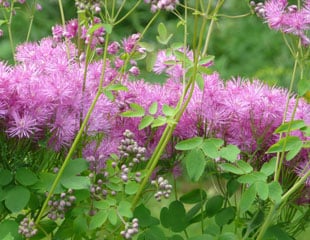
thalictrum aquilegiifolium
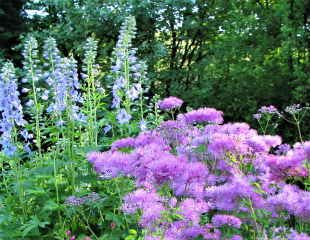
Thalictrum with Delphinium

Thalictum delavayi
How to grow Thalictrum
Key Facts:
Height: varies up to 2m
Light: best in light shade
Soil: moist, not too dry
Maintenance: Fully hardy H5, Tall varieties may need staking.
Special features: Beautiful, fluffy flower heads which sway with the breeze, followed by attractive seed heads.
Combines well with: Delphiniums, Grasses, Clematis, Astrantia, see below

I have tagged Thalictrum green wheelbarrow because it is easy to grow, unfussy about conditions and maintenance-free.
I love Thalictrum; it is a fantastic herbaceous perennial.
It is one of the best and easiest plants to grow and gives a great height to the borders. Thalictrum, common name Meadow Rue, flowers in the summer and has long-lasting flowers with attractive seed heads. It is herbaceous, which means it dies back over the autumn, leaving bare earth in the winter, from which fresh new growth appears in the spring.
Thalictrum's preferred growing conditions are moist, well-drained soil. That said, Thalictrum grows reasonably well in most positions and soil types. Thalictrum grows best in dappled or partial shade. In sunny spots where the soil can be dry, Thalictrum will grow but may well flower less.
Although many varieties of Thalictrum are tall, I have never bothered to stake and despite some gales, it has remained (mostly) upright. One advantage of not staking Thalictrum is that the breeze blows it around freely. If your garden is prone to blustery winds, rather than stake Thalictrum, which spoils its lovely ethereal shape, plant around it to give it protection and support, such as with Delphinium or a contrasting shrub, such as Cotinus/
Popular Types of Thalictrum

Thalictrum has multiple flower heads, usually shades of pink/purple and also white, with long-lasting flowers. The image left is Thalictrum aquilegiifolium, which is commonly sold in garden centres. It has the RHS garden merit award and is fully hardy.
The other image above right is Thalictrum delavayi, also readily available online and in garden centres.
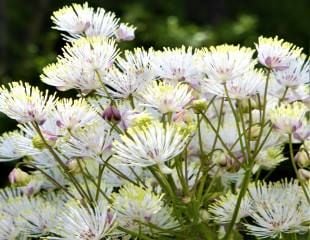
There is also a white variety, T. Album, illustrated below. Thalictrum delavayi and Thalictrum aquilegiifolium both grow up to around a meter, which makes them ideal for the back of a border. The foliage and seed heads of Thalictrum remain attractive, so you can cut it back after flowering or delay it until late winter or early spring. I leave the seed heads, and usually I am rewarded by seeing small birds perched on them.
There are also compact varieties such as Thalictrum 'Little Pinkie' up to .5m lovely soft pink colour available from Crocus.
Pros and Cons of growing Thalictrum
Pros:
fully hardy
Easy to grow
Low maintenance
Does not need to be divided regularly
Long flowering, attractive flower heads.
long season of interest
Cons:
Can self-seed around the garden
Tall varieties may need staking
Thalictrum emerging in Spring
Thalictrum look lovely as the leaves and flowers emerge in the spring. Bright, lime green foliage and buds appear. Thalictrum has a long season of interest. From when it emerges in the spring, followed by a long season of flowers, attractive seed heads and then lovely autumn colour.

Thalictrum in Autumn
Thalictrum is one of the herbaceous plants which looks attractive as it dies back.
The seed heads look good for many months after flowering, after which in the autumn the foliage turns a buttery yellow colour with darker stems.
As Thalictrum is herbaceous, once the frosts strike the foliage will collapse, and the plant dies back to bare earth over winter.
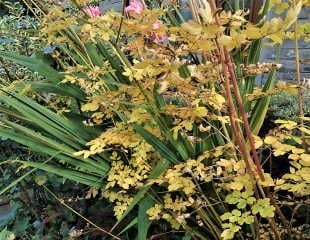
What to Plant with Thalictrum
Thalictrum with Cotinus
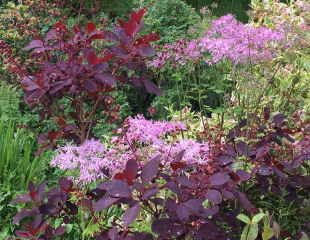
Thalictrum with Delphiniums

Thalictrum streamside
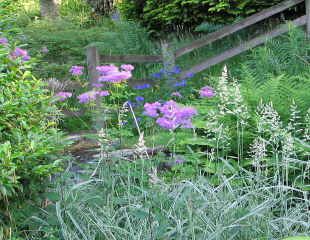
Thalictrum with Clematis

